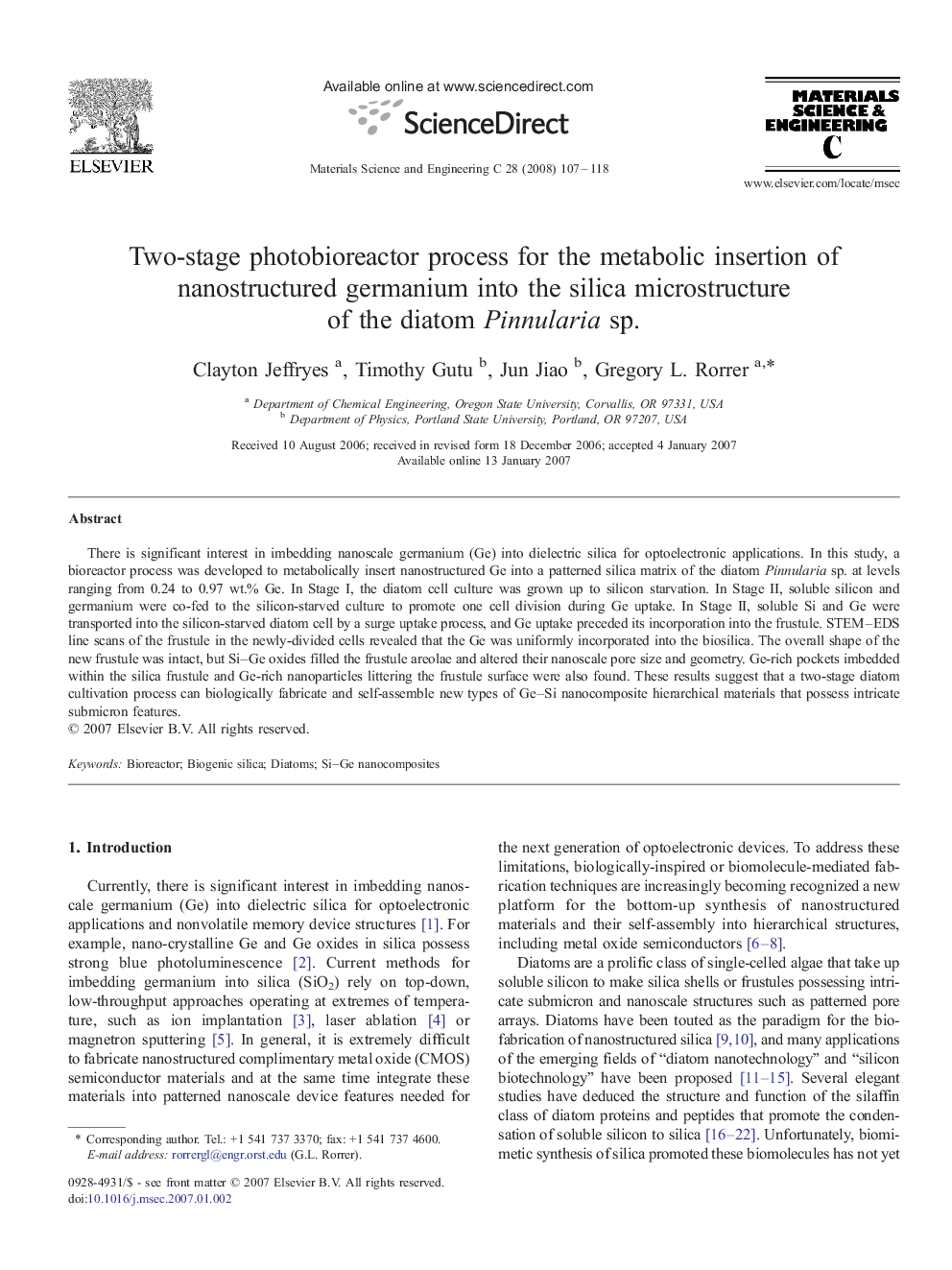| Article ID | Journal | Published Year | Pages | File Type |
|---|---|---|---|---|
| 1430066 | Materials Science and Engineering: C | 2008 | 12 Pages |
There is significant interest in imbedding nanoscale germanium (Ge) into dielectric silica for optoelectronic applications. In this study, a bioreactor process was developed to metabolically insert nanostructured Ge into a patterned silica matrix of the diatom Pinnularia sp. at levels ranging from 0.24 to 0.97 wt.% Ge. In Stage I, the diatom cell culture was grown up to silicon starvation. In Stage II, soluble silicon and germanium were co-fed to the silicon-starved culture to promote one cell division during Ge uptake. In Stage II, soluble Si and Ge were transported into the silicon-starved diatom cell by a surge uptake process, and Ge uptake preceded its incorporation into the frustule. STEM–EDS line scans of the frustule in the newly-divided cells revealed that the Ge was uniformly incorporated into the biosilica. The overall shape of the new frustule was intact, but Si–Ge oxides filled the frustule areolae and altered their nanoscale pore size and geometry. Ge-rich pockets imbedded within the silica frustule and Ge-rich nanoparticles littering the frustule surface were also found. These results suggest that a two-stage diatom cultivation process can biologically fabricate and self-assemble new types of Ge–Si nanocomposite hierarchical materials that possess intricate submicron features.
